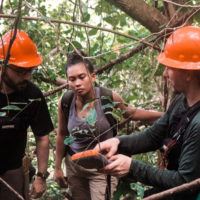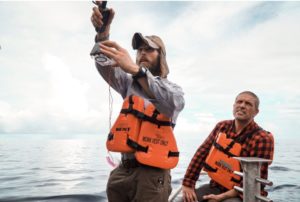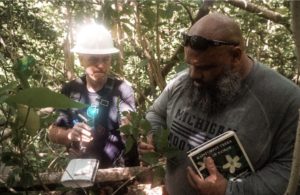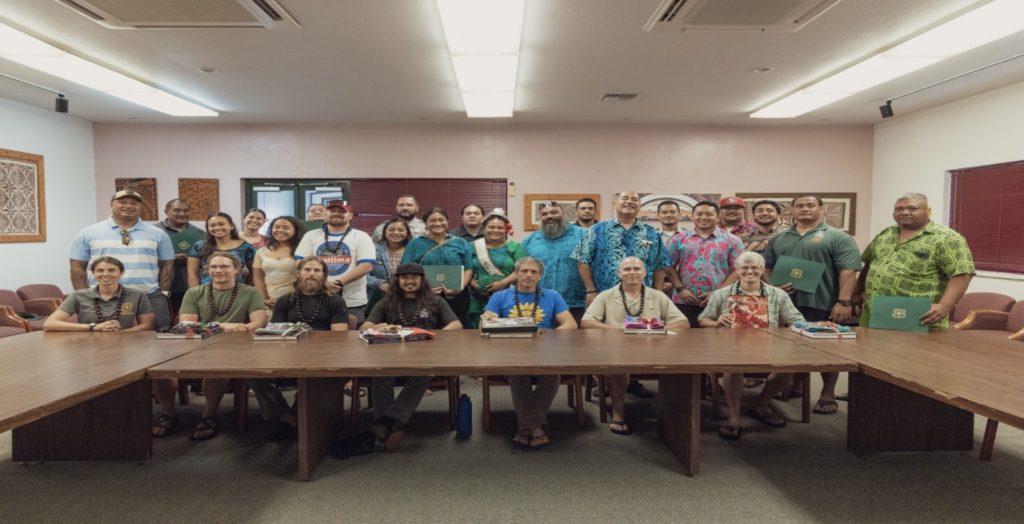
A survey of American Samoa’s forest, or the Forest Inventory and Analysis Project, has been completed by a team of federal and local partners.
It was conducted by The American Samoa Community College (ASCC) – Agriculture, Community and Natural Resources (ACNR) Forestry Program, in partnership with the United States Department of Agriculture (USDA) – U.S Forest Service.
Out of 47 plots on Tutuila and Aunuu, 43 were surveyed, two were denied access, and two were labeled hazardous.
For 25 Manu’a plots, 16 were surveyed and nine were labeled hazardous.
The FIA took about two months to complete, requiring extensive hiking to enable the surveying of many of the territory’s steep and dangerous slopes and thick forests. The plot survey included procedures such as measuring tree diameters, forest canopy, epiphytes, saplings and more.
“American Samoa has one of the most incredible forests I’ve ever seen and worked in,” said FIA Lead Ashley Lehman. “I have worked with such wonderful people and learned so much from them, and I hope to return again to continue the good work we’ve all done.”
Some of the highlighted discoveries from this project for the FIA participants included the large trees and open forests on the ridges, east of Fagamalo and Aoloau; the tavai forests in Ofu with large trees and no wasps or mosquitos; and seeing historic villages, trails, and old house foundations in the mountains of Tutuila and Ta’u.
“The FIA was a great opportunity for me to learn about our forests, and understand what our local and federal experts do to protect and manage them,” said ASCC-ACNR Forestry Intern Lessie Fualau.
The plots in American Samoa are part of a nationwide permanent plot network that extends throughout all 50 states and associated territories. The FIA protocol is a standardized, reliable, and repeatable method for collecting forest inventory data, which is used to monitor and measure the health, condition, and trends of forests.
The data collected from the FIA can answer questions about tree species, size, and overall health, tree growth and mortality, carbon storage; changes in forest cover and use over time; and the presence and severity of invasive plants and pathogens—such as Lopa, Tamaligi, Pulu Vao, and Coconut Rhinoceros Beetles.
The inventory data can also be used by landowners, policy makers, environmental agencies, and students to understand the past, present, and future conditions of the forests in American Samoa.
“The project itself was difficult but working with an amazing team and colleagues made it enlightening and productive,” said ASCC-ACNR Forestry Program Manager Denis Sene Jr. “I’m proud of the hard work we’ve done, and I look forward to sharing the project’s outcome with the public.” The next FIA project will be in 2032 and the current project report will be published in the next six months.




